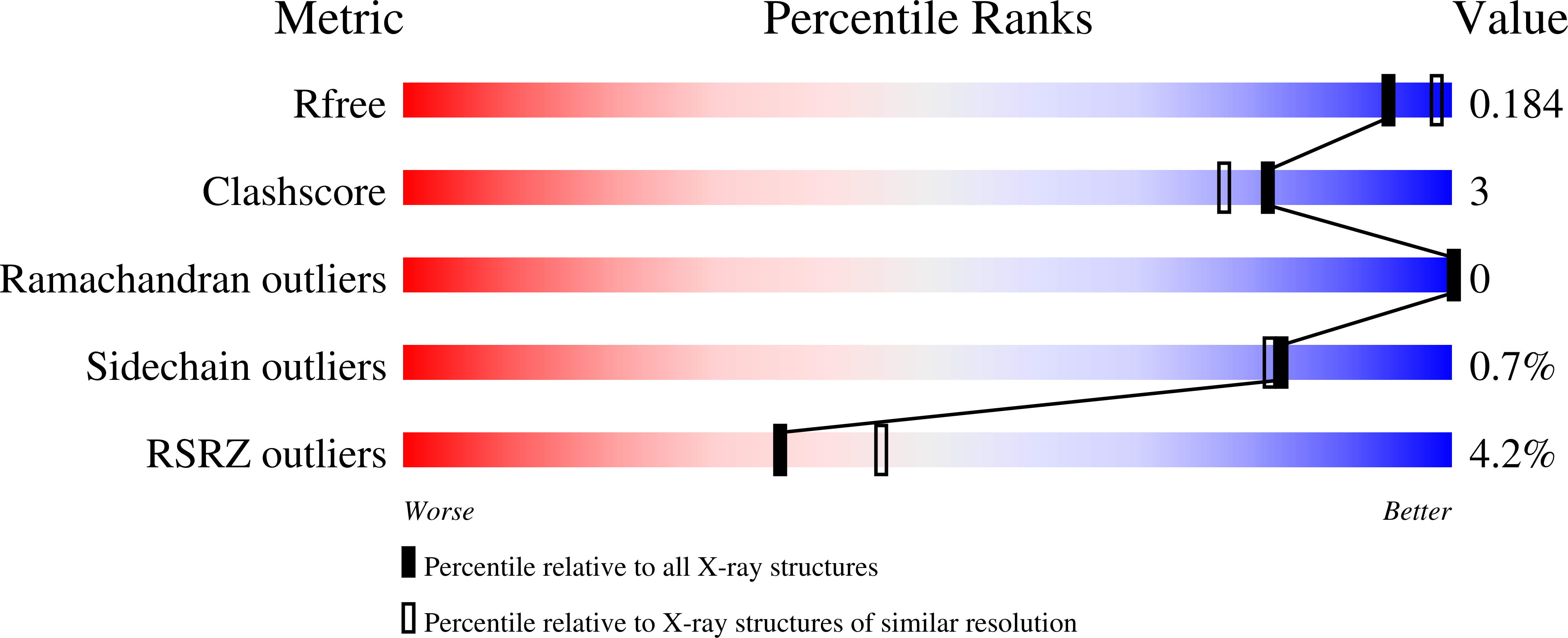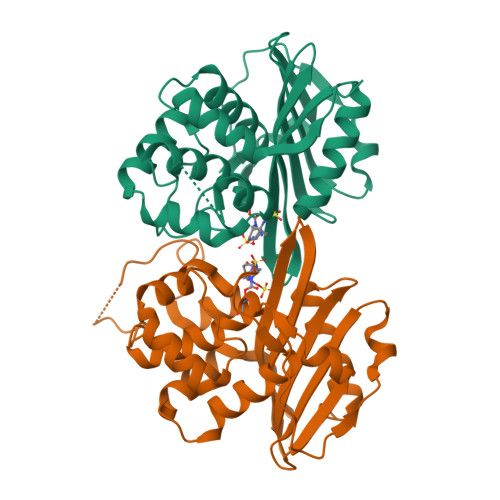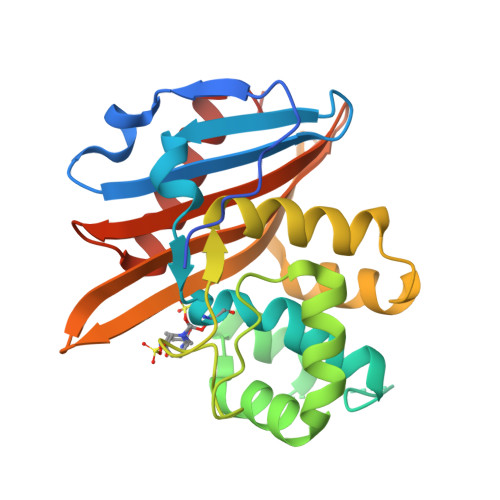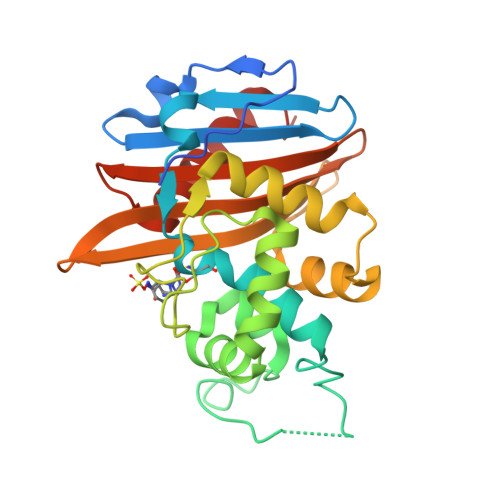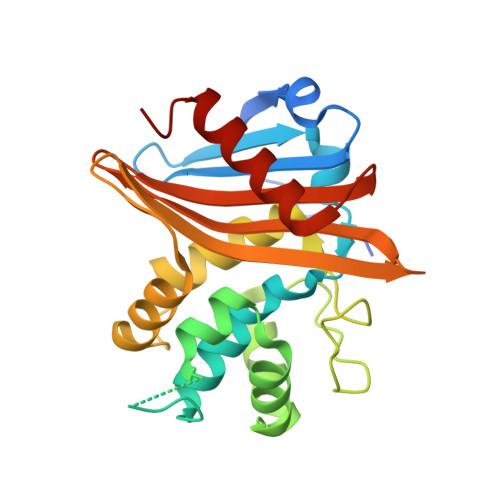Structural analysis of avibactam-mediated activation of the bla and mec divergons in methicillin-resistant Staphylococcus aureus .
Alexander, J.A.N., Radaeva, M., King, D.T., Chambers, H.F., Cherkasov, A., Chatterjee, S.S., Strynadka, N.C.J.(2020) J Biological Chem 295: 10870-10884
- PubMed: 32518158
- DOI: https://doi.org/10.1074/jbc.RA120.013029
- Primary Citation of Related Structures:
6O9S, 6O9W - PubMed Abstract:
Methicillin-resistant Staphylococcus aureus (MRSA) infections cause significant mortality and morbidity globally. MRSA resistance to β-lactam antibiotics is mediated by two divergons that control levels of a β-lactamase, PC1, and a penicillin-binding protein poorly acylated by β-lactam antibiotics, PBP2a. Expression of genes encoding these proteins is controlled by two integral membrane proteins, BlaR1 and MecR1, which both have an extracellular β-lactam-binding sensor domain. Here, we solved the X-ray crystallographic structures of the BlaR1 and MecR1 sensor domains in complex with avibactam, a diazabicyclooctane β-lactamase inhibitor at 1.6-2.0 Å resolution. Additionally, we show that S. aureus SF8300, a clinically relevant strain from the USA300 clone of MRSA, responds to avibactam by up-regulating the expression of the blaZ and pbp2a antibiotic-resistance genes, encoding PC1 and PBP2a, respectively. The BlaR1-avibactam structure of the carbamoyl-enzyme intermediate revealed that avibactam is bound to the active-site serine in two orientations ∼180° to each other. Although a physiological role of the observed alternative pose remains to be validated, our structural results hint at the presence of a secondary sulfate-binding pocket that could be exploited in the design of future inhibitors of BlaR1/MecR1 sensor domains or the structurally similar class D β-lactamases. The MecR1-avibactam structure adopted a singular avibactam orientation similar to one of the two states observed in the BlaR1-avibactam structure. Given avibactam up-regulates expression of blaZ and pbp2a antibiotic resistance genes, we suggest further consideration and research is needed to explore what effects administering β-lactam-avibactam combinations have on treating MRSA infections.
Organizational Affiliation:
Department of Biochemistry and Molecular Biology and Centre for Blood Research, The University of British Columbia, Vancouver, British Columbia, Canada.







